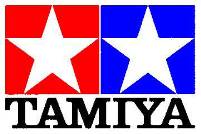
1983 Yamaha CV80E Scooter information
"Beluga" what a name for a scooter? According to an old Yamaha mechanic it was a reference to the "exclusivity and classiness of Beluga caviar", although it might also be an affectionate nod to the adorable white whale given the shape of the CV80E, one wonders if anyone knows for sure. We do know the same model was marketed in Germany as “Hercules”, in Holland as "City" and in North America as “Riva”. It is well known that companies use names that create suitable images in the relevant market places but quite what image they were trying to create with a name like Beluga we don't know.
Marketed from 1981 to 1987 the CV80E was a 2-stroke 80cc scooter which had certain innovations that would become commonplace on scooters that followed. CVT transmission, 2-stroke oil injection, electric start and auto-choke all featured on the Beluga. Strangely the CV80E was actually slower than many of it's 50cc competitors, never mind other 80cc scooters. The original version of the Beluga (perhaps its lack of speed and ungainly looks were behind the name?) had a power output of 4.7hp. This lack of performance might have been due to it's very small carb' and restrictive exhaust system as well as quite low gearing. Things which made the engine easy to handle but not terribly exciting.
As a number of performance parts surface to boost the scooters specifications Yamaha started upgrading the later models. The 13mm carb' became a 16mm carb' and the exhaust was redesigned to have a sort of expansion chambered design. Other changes to the cylinder, head, intake manifold and more dramatically improved performance. The much revised later models could push out 6.9hp and record 0-60km/hr times of 10.5sec's and push to a top speed around 75kph, or 45mph. Another problem for the early Beluga was the 6 volt electrical system. It might have had electric start but this often failed to start the scooter if the battery wasn't fully charged. It also displayed problems like the headlights dimming when the brake lights came on or flickering when the indicators were in use.
Less safety oriented but equally annoying was the lack of storage space compartments although they did sell a range of accessories which include a windscreen and lockable storage box. Yamaha also chose to sell strange storage holder for a tennis racket!




1/24th scale kit
Built by Rod


Tamiya's motor scooter set kit no.1801-300, released in the early 1980s, consisted of four scooters which were also individually put in as extras in certain car kits. The four scooters were :- Honda Tact 50, Suzuki Gemma 50, Yamaha Beluga CV80E and Vespa 50s. The four model scooter set was not generally exported and the instructions have never been translated to English, although they are pretty simple kits and with Tamiya's excellent pictorial instructions I doubt anyone needs the words anyway. Some time ago a model shop in Hemel Hempstead (13-15a High Street, Hemel Hempstead to be precise), owned by Richard Kohnstam, imported Tamiya kits under their RIKO umbrella firm. Although not officially available for import to the UK Kohnstam was able to get some of these sets and they did sell well. They're rare in the UK today, so rare we still haven't got one and don't have the Suzuki scooter to finish the set.
Rod built the Yamaha scooter during September 2007 along with most of the other scooters in the Tamiya range (and some other two wheeled items the origins of which we have little information). Rod collected acquired the scooters as extras in other Tamiya car kits and from the Campus friends set. They are all built as straight from the box models using Halfords acrylic car spray paints for the main body work supplemented by Humbrol enamels and Revell acrylic paints.
RETURN TO :-